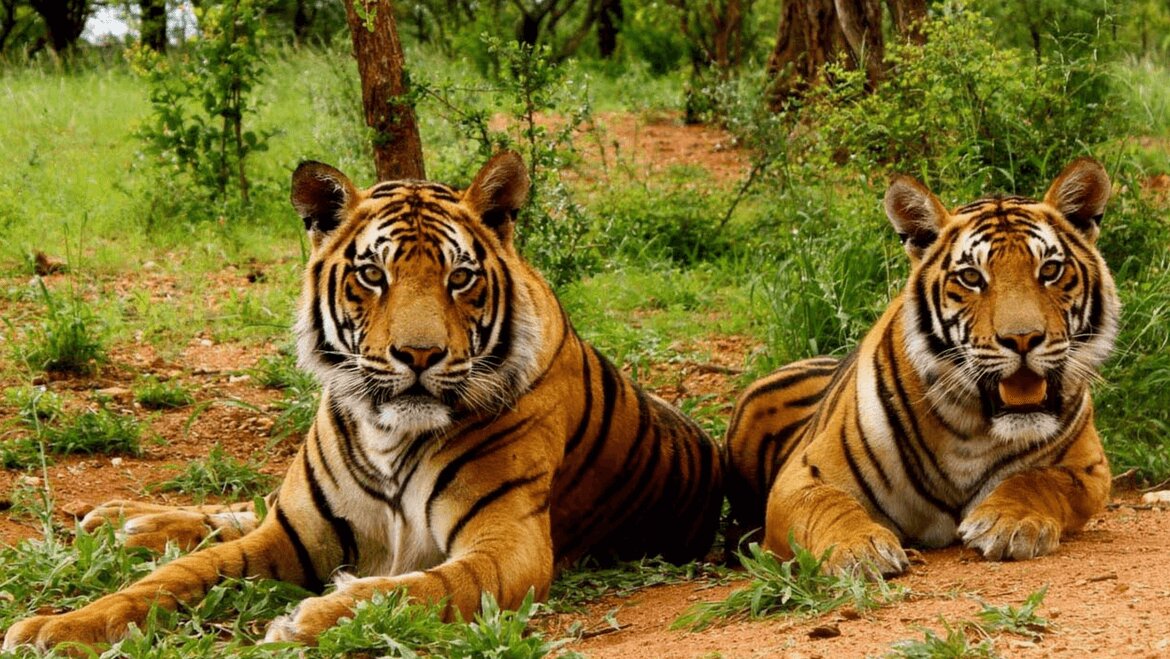Biodiversity & Environment
Tiger Census 2018: Guinness Book of World Records
- 14 Jul 2020
- 5 min read
Why in News
India’s 2018 Tiger Census has made it to the Guinness Book of World Records for being the world’s largest camera trapping wildlife survey.
- India has also fulfilled its resolution to double the Tiger numbers made at St. Petersburg Tiger Summit in 2010, before the target year of 2022.
- The tiger numbers in India have increased from around 1500 in 2010 to 2976 in 2020.
Key Points
- Comprehensive: The fourth cycle of the Tiger Census 2018, conducted in 2018-19 is the most comprehensive in terms of both resource and data recorded.
- It counted 2976 tigers which is 75% of the global tiger population.
- The census is done quadrennially (every four years) by the National Tiger Conservation Authority (NTCA) with technical help from the Wildlife Institute of India.
- It is done with cooperation from the state Forest Departments and partners.
- Methods:
- Camera traps were placed at multiple locations across different sites and surveyed an effective area of 121,337 square kilometres.
- Camera Traps are outdoor photographic devices fitted with motion sensors that start recording when an animal passes by.
- It also conducted extensive foot surveys that sampled habitat plots for vegetation and prey dung.
- Camera traps were placed at multiple locations across different sites and surveyed an effective area of 121,337 square kilometres.
- Identification: From these photographs 83% of the total tiger population were identified using stripe-pattern-recognition software.
- The software helps to match a new image of a tiger already in the database, based on the pattern of stripes.
Project Tiger
- It was launched in 1973 with 9 tiger reserves for conserving our national animal, the tiger.
- It is an ongoing Centrally Sponsored Scheme of the Ministry of Environment, Forests and Climate Change.
- Currently, the Project Tiger coverage has increased to 50 Tiger reserves, spread out in 18 tiger range states which amounts to around 2.21% of the geographical area of our country.
- The tiger reserves are constituted on a core/buffer strategy. The core areas have the legal status of a national park or a sanctuary, whereas the buffer or peripheral areas are a mix of forest and non-forest land, managed as a multiple use area.
- The NTCA was launched in 2005, following the recommendations of the Tiger Task Force. It is a statutory body of the Ministry, with an overarching supervisory/coordination role, performing functions as provided in the Wildlife (Protection) Act, 1972.
- M-STrIPES (Monitoring System for Tigers - Intensive Protection and Ecological Status) is an app based monitoring system, launched across Indian tiger reserves by the NTCA in 2010.
- The system would enable field managers to assist intensity and spatial coverage of patrols in a geographic information system (GIS) domain.
- Scientific Name: Panthera tigris
- Indian Sub Species: Panthera tigris tigris.
- Habitat: It stretches from Siberian temperate forests to subtropical and tropical forests on the Indian subcontinent and Sumatra.
- It is the largest cat species and a member of the genus Panthera.
- Traditionally eight subspecies of tigers have been recognized, out of which three are extinct.
- Bengal Tigers: Indian Subcontinent
- Caspian tiger: Turkey through central and west Asia (extinct).
- Amur tiger: Amur Rivers region of Russia and China, and North Korea
- Javan tiger: Java, Indonesia (extinct).
- South China tiger: South central China.
- Bali tiger: Bali, Indonesia (extinct).
- Sumatran tiger: Sumatra, Indonesia.
- Indo-Chinese tiger: Continental south-east Asia.
- Designated as the National Animal of India, Bengal Tiger is most recognisable for its dark vertical stripes on orange-brown fur with a lighter underside.
- Importance: Tigers are terminal consumers in the ecological food pyramid, and their conservation results in the conservation of all trophic levels in an ecosystem.
- Threats: Habitat destruction, habitat fragmentation and poaching.
- Protection Status:
- Indian Wildlife (Protection) Act, 1972: Schedule I
- International Union for Conservation of Nature (IUCN) Red List: Endangered.
- Convention on International Trade in Endangered Species of Wild Fauna and Flora (CITES): Appendix I.
- Tiger Reserves in India
- Total Number: 50
- Largest: Nagarjunsagar Srisailam Tiger Reserve, Andhra Pradesh
- Smallest: Orang National park, Assam







